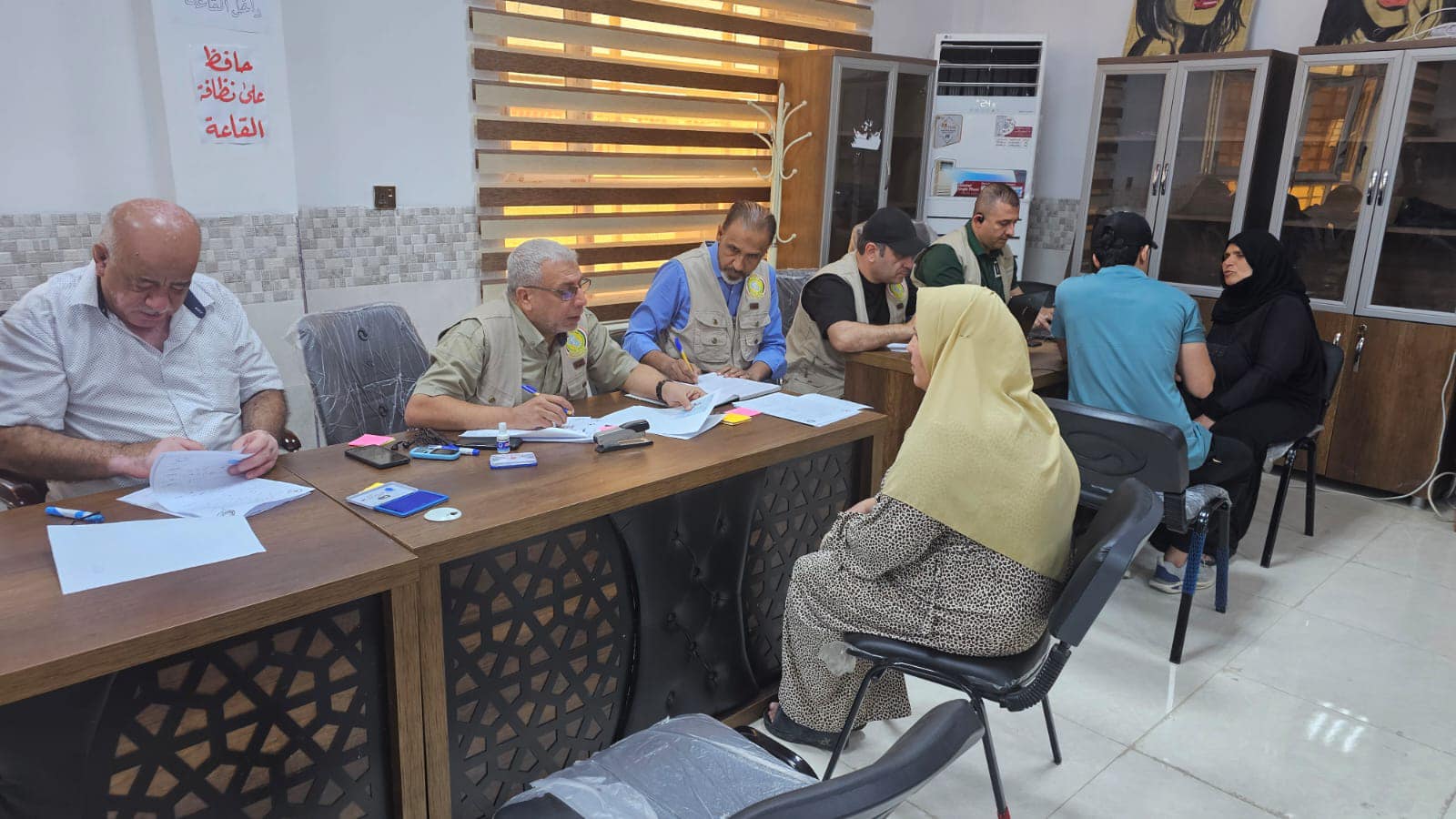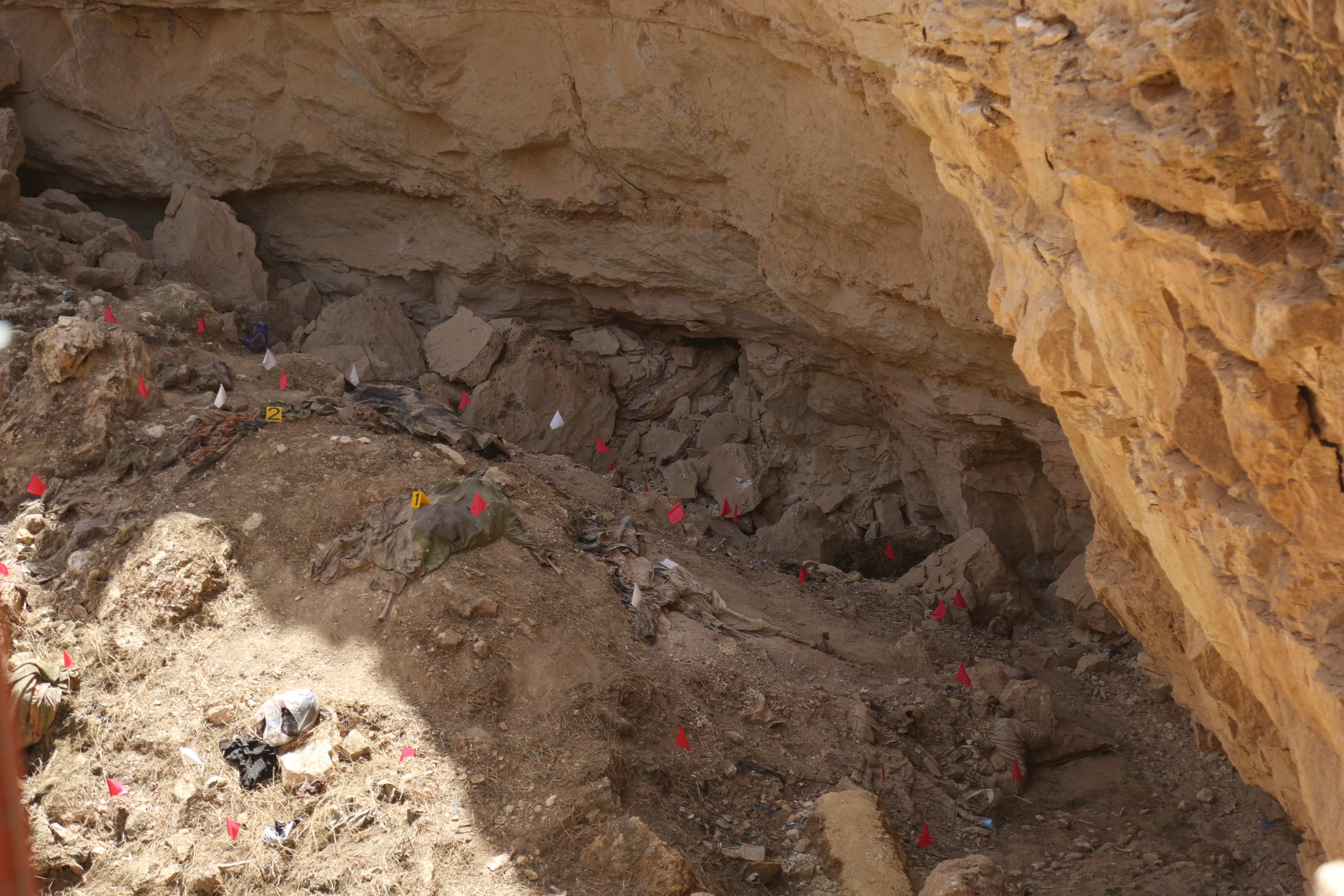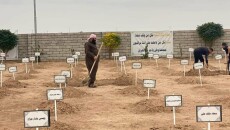The Iraqi Mass Graves Office has begun excavating and removing bodies from the Alo Antar pit, or "pigeon well", which the extremist militants of the Islamic State of Iraq and Syria ISIS used for mass execution and dumping bodies.
The grave was excavated Tuesday, May 28, after 10 years of killing and executing "more than 1,000" people and dumping their bodies in the sinkhole.
Dhia Karim, director of the mass grave protection office of the federal government's Martyrs Agency, said in a press conference at the beginning of the excavation process, the Alo Antar pit is the site of "a heinous crime of Daesh (ISIS) and a great challenge in the case of excavating mass graves and finding the identities of victims.
Karim said the working area will be 20 to 30 meters wide and 10 to 25 meters deep, as the first phase, which will be carried out with the assistance of several other parties, including the Baghdad forensic medicine, security forces, civil defense, health and international organizations.
The Iraqi High Commission for Human Rights says the pit of Alo Antar contains the bodies of "more than 1,000" Turkmen and Ezidi (Yazidi) civilians, massacred by IS fighters.
The director of the Mass Grave Protection Office said that everyone should unite their efforts to return the bodies of the victims and identify them.
The federal government began collecting blood samples from relatives of the victims and missing in Tala'far in mid-2022, with the aim of comparing and testing DNA with the bodies of the mass graves.
Alo Antar is located about six km from Tal Afar in an arid area in west Nineveh, only 600 meters away from the main road, in an empty area deep in the desert, near the Shiite Turkmen village of Beg Qut.
Over 200 mass graves holding the remains of as many as 12,000 victims have been discovered in areas formerly controlled by IS in Iraq, in the governorates of Ninewa, Kirkuk, Salah al-Din and Anbar in the northern and western parts of Iraq, according to a UN report released in November 2018
According to the Kurdistan Regional Government KRG, there are 80 mass graves in Shingal district, hopme for the non-Muslim Ezidi community accused by the extremist militants of being heretics. Only a small number of them have been excavated so far.

Like the Ezidis, the Turkmens of Tala'afar faced killings, kidnappings and displacement at the hands of IS militants. The fate of about 1,300 Turkmen, including hundreds of girls and women, is still unknown.
Ibtissam Hayo, a Turkmen activist, told KirkukNow earlier that the pit was originally known as the pigeon well (Bir al-Hamaim) because flocks of pigeons were often seen on it, but the Turkmen call it Alo Antar According to some residents of Tala'afar, a large meteor fell hundreds of years ago and caused the formation of the hole.
The pit is about 50 meters in diameter and 100 meters deep, but the depth has been reduced due to the dumping of bodies and covering them with mud by IS fighters.
“Between June 2014 and December 2017, ISIL seized large areas of Iraq and led “a campaign of widespread violence and systematic violations of international human rights and humanitarian law – acts that may amount to war crimes, crimes against humanity, and possible genocide,” the UN report states.
Hayyo said the victims were reportedly Turkmen and Ezidis. There were bodies of women and children, some of whom were identified by their clothes.
According to local activists and civil society organizations in Tal Afar, out of 1,300 people kidnapped during the rule of IS, including hundreds of women and children, only 48 people have been released, including 23 women and 25 men.
Part of the 23 surviving girls and women, "confessed to being raped and forced to abortion by the Daesh fighters."
In February 2021, Istebrak Yezaoğlu, head of the Turkmen Front's mass organizations, revealed that 1300 Turkmens were abducted, 470 were women, 700 men and 130 children, taken by IS fighters into unknown destiny.
Tala'afar is located 69 km northwest of Mosul in Nineveh province, with a population of more than 524,000, according to the Ministry of Planning estimates for 2019. The center of the town is home for Turkmen, surrounded by Arabs and Kurds at the outskirts.
Turkmen, the third largest ethnic group in Iraq after Arabs and Kurds, are spread across the country, residing almost exclusively in the northern towns and villages stretching from Tal Afar through Mosul, Erbil, the center of Kirkuk, and Altun Kopri district, Tuz Khurmatu of Salahaddin and Kifri and Khanaqin in Diyala. They are all Muslims, half Sunnis and half Shiites.
Observers believe there are about 600,000 Turkmen in Iraq while the Turkmen political parties claim they are about 2 million people.






